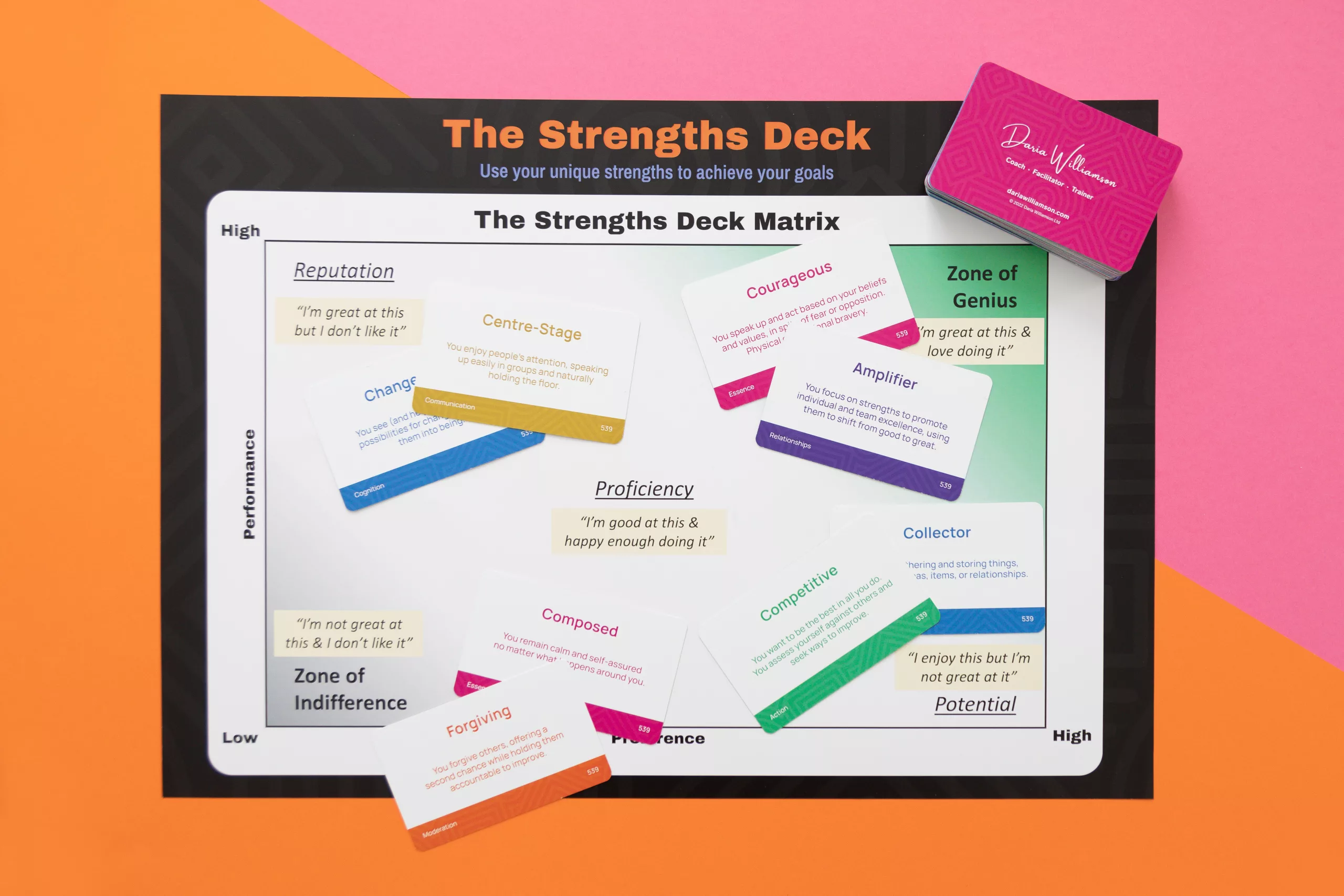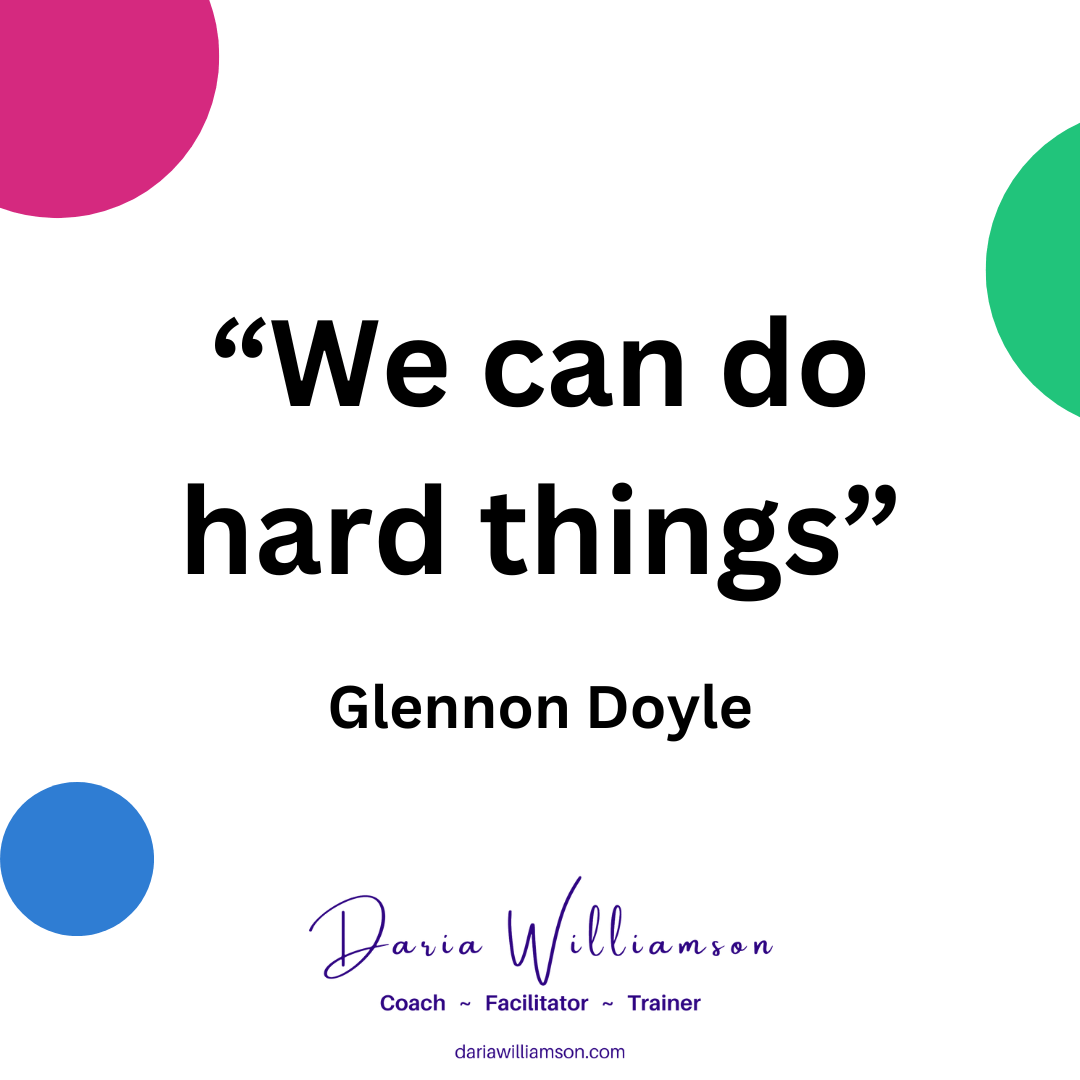As leaders, we need a comprehensive toolbox to succeed in our roles. I’ll be publishing a series of posts on leadership tools in coming months, so keep an eye out! I am starting this series with self-care because I believe it is the single most important tool for our toolbox.
It may feel like an entirely “selfish” practice because we are turning our energy towards ourselves, rather than directly serving those we lead. But there’s a reason that airline safety videos tell you to put your own oxygen mask on before helping others. A good self-care practice supports our wellbeing, allowing us to live a more awesome life, doing all the great things we dream of, and enjoying ourselves for many years to come.
Inspiration’s dark side
Years ago, a friend bought me a coffee mug with the phrase “She believed she could, so she did”. It is my favourite mug, not only because it holds plenty of coffee(!), but also because reading that sentiment is an inspiring way to start the day.
But there can be a dark side to such “inspirational” quotes. They can make us feel like we’re being driven, have to strive, are not enough, have to work harder and be more. This can lead to burnout, as we push ourselves beyond our limits for too long, without attending to our own needs.
One of the best ways I know to combat this dark side is to have a solid self-care practice. That’s why I added the next bit to the phrase, as a reminder to look after myself first.

Image: (c) 2020 Daria Williamson
What is self-care?
Self-care can take many forms, and what works for one person doesn’t necessarily work for others. But at its core, self-care is taking action and making decisions that support your wellbeing and flourishing in all areas of your life.
In general, we feel good when we experience a reasonable level of success and fulfilment in areas of life that are important to us. When one or more areas suffers, our sense of wellbeing and flourishing usually suffers too. Implementing a self-care practice can help us increase areas that are low, and maintain areas that are going well. This can sustain us even when things get really tough.
What self-care isn’t
Before we go on, a word of caution: don’t be fooled by the idea that self-care is all about “insta-worthy” moments. While you will have cool experiences along the way, a well-rounded self-care practice often includes pretty boring stuff, like putting money aside for your emergency fund, saying “no” to some things or people, going to the dentist, paying your bills on time, getting to bed early, and eating your vegetables. These boring bits support your exciting adventures (and will give you glowing skin and a beautiful smile when you do have an insta-moment!)
How do I start a self-care practice?
First, identify which areas of life are important to you, and how you are doing in each area. Then you can decide where to take action and create habits to support your wellbeing.
Conduct a life area measurement exercise
I’ve written a “how-to” post that explains the (very easy) process for a life area measurement exercise here. And to make it even easier, I’ve created a free downloadable PDF template that you can access through the above link.
Once you’ve worked out what’s important to you, and where you want to make improvements, you’re ready to create a self-care action plan.
Create a self-care action plan
This is where you will start transforming your life! But please don’t fall into the trap of thinking you have to make massive life changes right away. That’s a sure-fire way to make life harder, not better. What we’re aiming for here is continuous improvement, not instant perfection!
Small steps

Image credit: Pexels
So, we’ll start with small steps in one or two areas. Let’s say you scored low on “Exercise”. It’s tempting to set yourself a “BHAG” (Big, Hairy, Audacious Goal) like “I’m going to run a marathon”. I’m guessing that, if you scored lower on exercise, you’re not currently fit enough to train for a marathon.
Instead, think about one easily-achievable action you can take this week to move more. You might park further away from the supermarket door, take the stairs instead of an elevator, or spend 30 minutes weeding the garden or walking the dog. As long as it’s a bit more than you did last week, then you’re on the path to flourishing!
Select the areas for improvement
Pick just one or two areas from your life area measurement exercise where you would like to take action. They might be areas with the lowest scores, or ones where you can make a decent difference without too much effort (that’s the low-hanging fruit).
Choose your actions
Then, for each area, choose one or two easy-to-implement actions that you think will have a reasonable payoff. I strongly recommend you choose no more than four actions in total. More than that starts to feel too hard, and we want quick success to fuel your motivation to keep going.
Set a goal
Next, set an achievable goal for those actions. Continuing the exercise example, let’s say you set a goal to work in the garden for 30 minutes twice a week. You want the goal to be a little bit challenging, but still attainable.
Set a timeframe
Now, set a timeframe for your goal. If you’re going for daily action, 2-3 weeks is a good horizon. A less-frequent action requires a longer timeframe. Using the above example, you decide to do 30 minutes gardening twice a week over the next two months.
Repeat for each action.
Remember the good things you already do
It’s also worthwhile to think about what you’re currently doing in the areas that you scored the highest. You don’t want to stop doing these things, because they’re already working for you. Add a couple of these things to your list as reminders to keep up your good work.
Congratulations! You’ve just created your first self-care plan!
Turning a self-care plan into a practice
Developing a self-care plan is a great start to supporting your sense of wellbeing and flourishing. But a plan won’t change the world – as a personal trainer once said as he handed me an exercise plan: “It only works if you do it“. That’s why I encourage you to pick only a handful of actions and make the goals and timeframes achievable.
So what next? You want to get your chosen actions happening the real world. You can do this by:
- adding your actions to your to-do list. And make them a high priority – read my post about how to turn your to-do list into an achievement list
- making an appointment with yourself. We’re far more likely to complete a task if we make it an appointment in our calendar or diary
- making a public commitment, e.g. on social media or emailing it to friends. Writing it down and making it public both increase our chances of success, as we want to “live up” to our words.
- asking a friend or loved one to keep you accountable. Or even better if you’re aiming to increase a social area, to join you with the action.
- creating a reward chart. Give yourself a tick or gold star each time you take an action, then reward yourself when you’ve achieved your goal. And match the reward to the action. If you’re aiming to eat minimally-processed food, then rewarding yourself with junk food might detract from your achievement!

Image credit: Pexels
No plan is ever perfect, even a self-care plan!
Life is what happens to us while we are making other plans.
Allan Saunders
You might be lucky and focused enough to hit 100% of your goals. But sometimes life gets in the way. That’s OK – give yourself some grace, because any progress you make is valuable!
If your goal was to do something twice a week for two months, and you skipped a week, you still achieved 80% of your goal. And that’s probably more than if you hadn’t created a plan and put it into action.
Plan, Do, Check, Act
The world of Lean thinking has given us the fantastic “Plan, Do, Check, Act” (PDCA) cycle. The basic idea is to create a program of action (Plan), implement it (Do), review how it is going (Check), and make adjustments for the next round of action (Act). By creating your action plan and putting it in place with goals and timeframes, we’ve already covered “Plan” and “Do”.
Now that you’ve completed your first cycle of actions, take a few minutes to review your action plan, goals and timeframes. How did you go with achieving them? This is the “Check” step. Remember to be kind to yourself here; we’re aiming for continuous improvement, not perfection.
If you achieved your goals, did they make a positive difference to the selected life area? Yes? Great, stick with them! No? How can you tweak them to be more effective?
Maybe you achieved your goals, but your actions didn’t make a significant difference to the selected life area. Why not? Consider changing the action out for a new one, or adjusting the goal and/or timeframe.
And if you didn’t achieve your goals, what was the impact of the action you were able to take? What will you change for your next round of action?
This process of adjusting your actions, goals and timeframes is the “Act” step. Once you’ve settled on what you’re going to do, you’re back into “Plan” mode, and the cycle begins again.

Image credit: Christoph Roser at AllAboutLean.com
Rinse & repeat – self-care as an ongoing practice
Once you’ve run through a couple of PDCA cycles, you’ll get a good feeling for which actions are giving you bang for your buck. By repeating these regularly, you’ll build your self-care practice.
A self-care practice isn’t some magic formula that will work for you for the rest of your life. Be open to reviewing what you’re doing, and how effective it is, on a regular basis.
And take time to reflect on the changes to your sense of wellbeing and flourishing over time. If your self-care practice is effective, you’ll see positive changes to how successful and fulfilled you feel, and how effective you are as a leader.
Too Long, Didn’t Read? Self-care in a nutshell
- Self-care is vital for leaders who want to go the distance.
- Assess how you’re currently doing in the life areas that are important to you.
- Make a plan to address areas that are lagging, then put it into action.
- Review your progress, tweak your actions, and go again.
- Enjoy your growing sense of wellbeing and flourishing, and its impact on your effectiveness as a leader.
Sources
(all links open in a new window):






7 thoughts on “Leadership Toolbox: how to create a self-care plan”
Pingback: Experiencing coronavirus fatigue? You're not alone. What can you do about it? ~ Potentiate Consulting
Pingback: Leadership Toolbox: empathy ~
Pingback: How-to: Life area measurement exercise ~ Daria Williamson
Pingback: Leadership Toolbox: What we need to know for living with complexity ~ Daria Williamson
Pingback: Our autonomic nervous system and stress ~ Daria Williamson
Pingback: Leadership Toolbox: getting to grips with empathy ~ Daria Williamson
Pingback: What you need to know about our autonomic nervous system and stress ~2021 ~ Daria Williamson
Comments are closed.